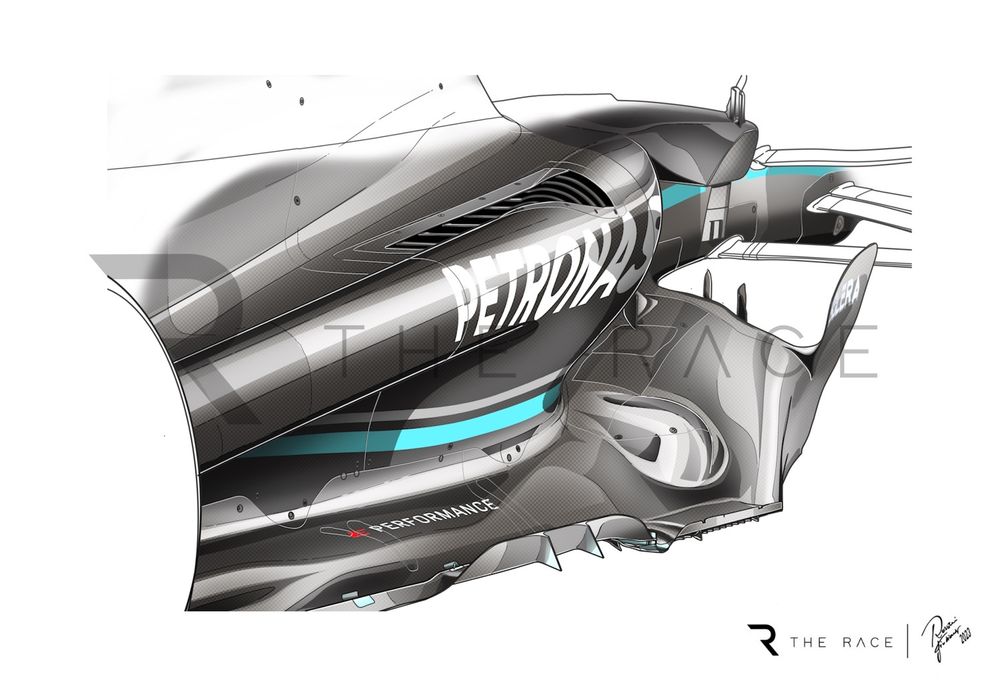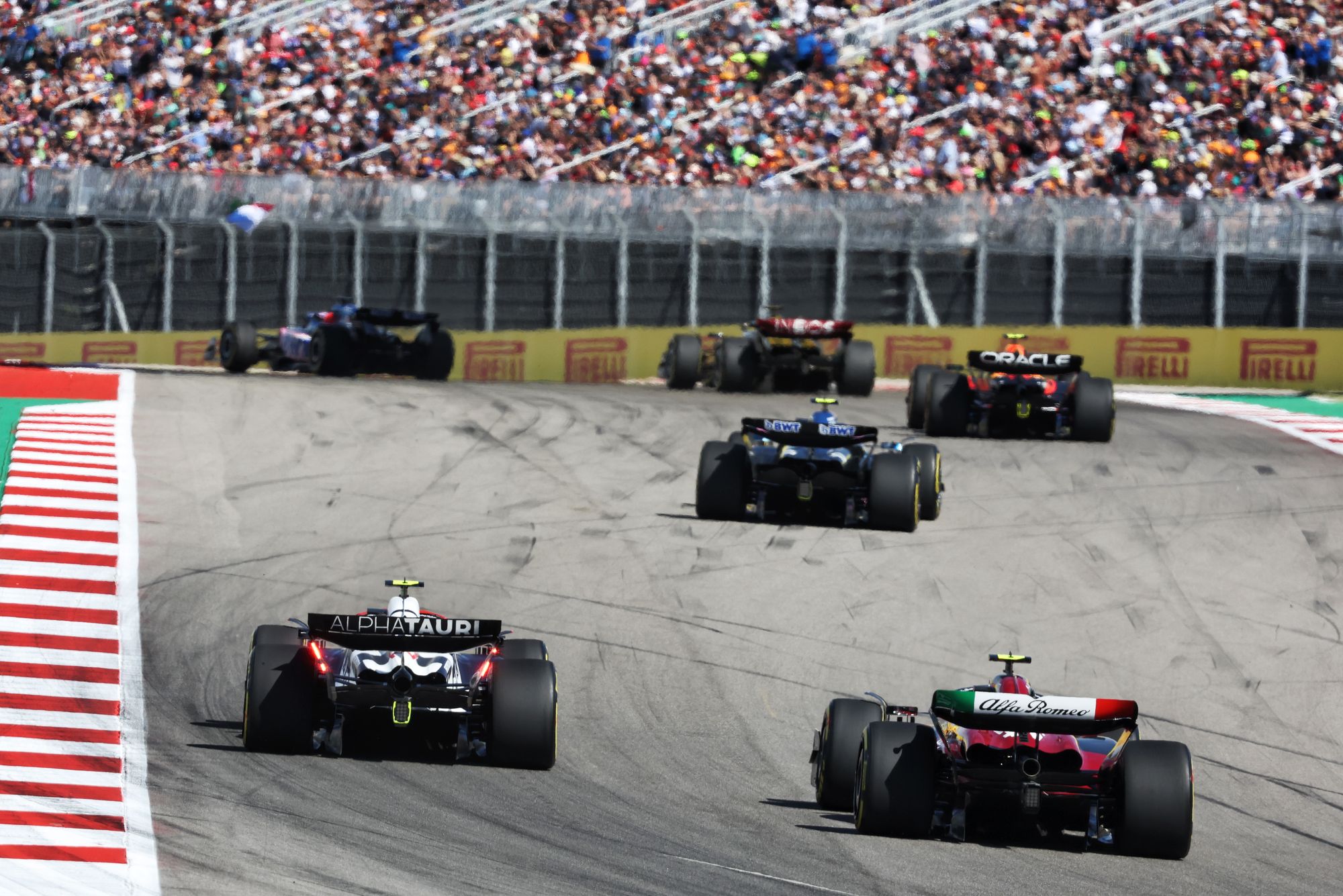Up Next

Mercedes introduced a new floor at Austin that carried with it a lot of talk about the 2024 Formula 1 season. The main aim was to confirm its development direction for next year’s car, but the performance gain it produced was never going to be a major one given the geometry of the car around the area you are developing restricts the extent of the changes you will make. If the outcome is positive then Mercedes will exploit these ideas fully next year.
The areas Mercedes focused on with this upgrade were the underfloor leading edge, the front corner of the sidepod and the front-outer edge of the floor.
The profile of the outer splitter highlighted in green below looks very similar. Only the trailing edge highlighted in yellow has changed its profile.
The main changes are highlighted in red. The upper surface of the floor’s leading edge has been reduced in length fairly abruptly. I can only imagine that the undersurface also follows more or less this profile.
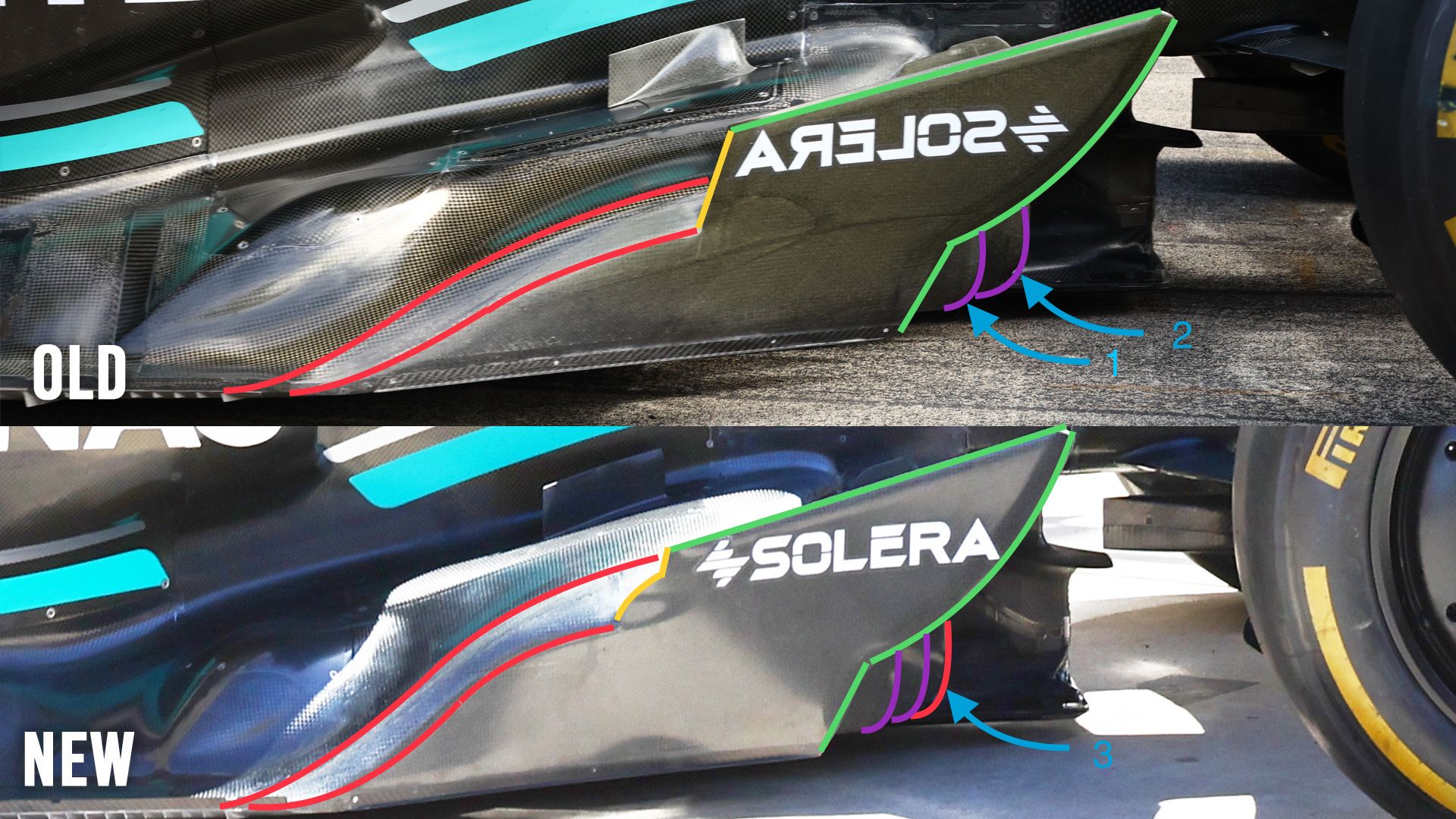
By doing this, more of the airflow that is fed into the leading edge between splitters ‘1’ and ‘2’ will be deflected out of the side of the floor just that little bit further rearward.
Mercedes has also fitted a new splitter - ‘3’ - inside of the previous pair. This again will deflect more of the underfloor entry flow out the side of the front corner of the floor.
This means that the airflow between splitter ‘3’ and the inner wall of the underfloor is the airflow that the diffuser has to work on. This airflow will be reduced in volume, meaning that for the same volume of diffuser the airflow under the car will be travelling faster, so generating more downforce.
Also, because of deflecting this flow outwards with the curved underfloor splitters, some of this airflow will escape under the lower edge of the splitter. This airflow will form horizontal vortices that will energise the underfloor airflow that is going to the diffuser.
If this all works correctly, it will produce more downforce and, more critically, more robust underfloor downforce.
The below view suggests that the leading edge of the underfloor highlighted in red has been lifted but I think it has actually maintained its height for longer.
The areas inside the green ellipse looks very similar. It is further rearward now that the main changes have taken place.
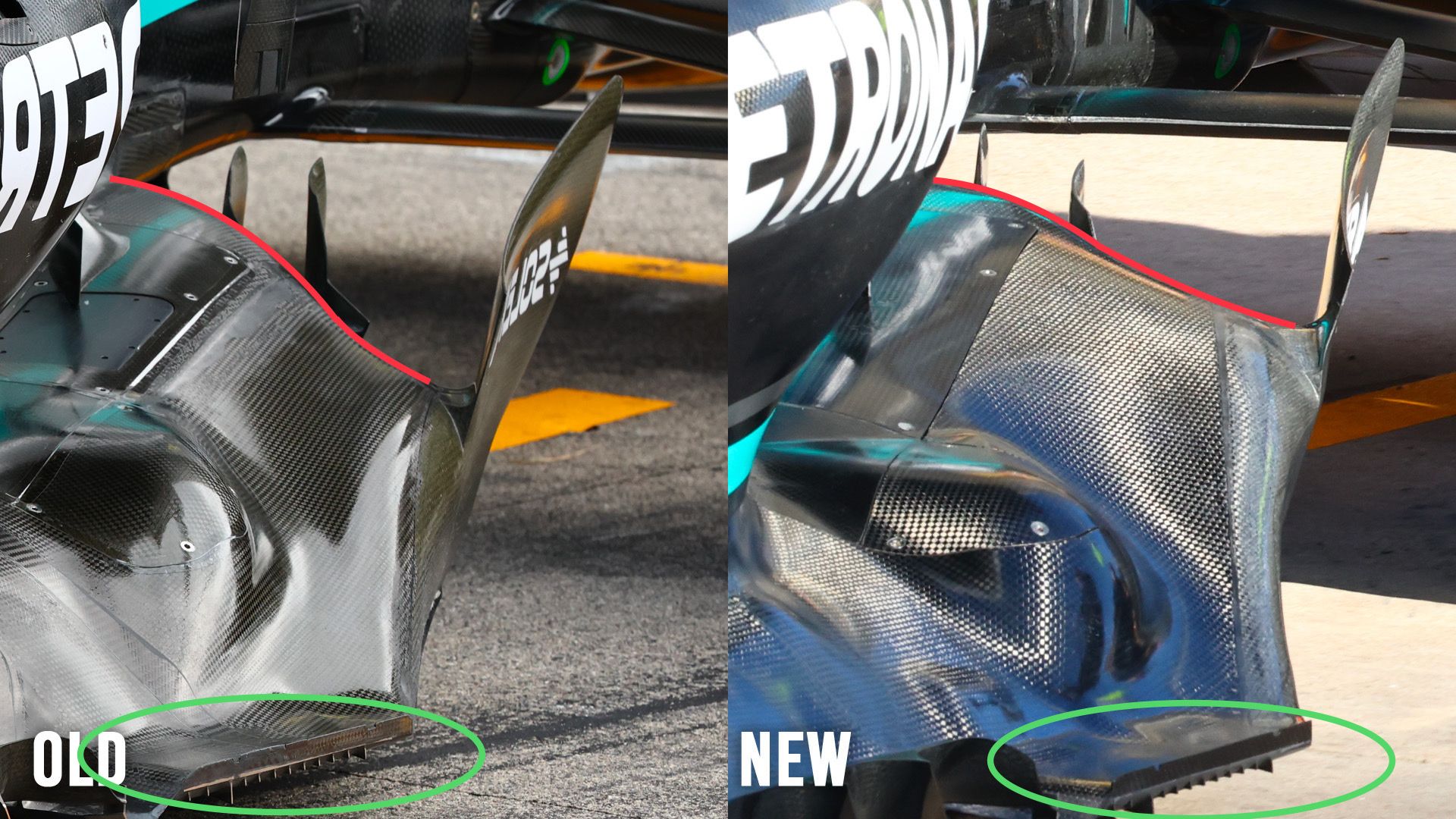
All of the above is driven by the need to get this area of the floor working harder. Maximise the flow structure in this area and the diffuser will, in effect, become more powerful.
The profile of the edge highlighted in green below is very similar, if slightly longer where it turns into a blue highlight. With more airflow being diverted out of this area, it sets up stronger vortices to improve the sealing further rearward.
This has also required the relocation of the small triangular splitters. These are positioned so that they increase the strength of this vortex structure highlighted by the magenta arrows. The red arrows are what kickstart this vortex structure.
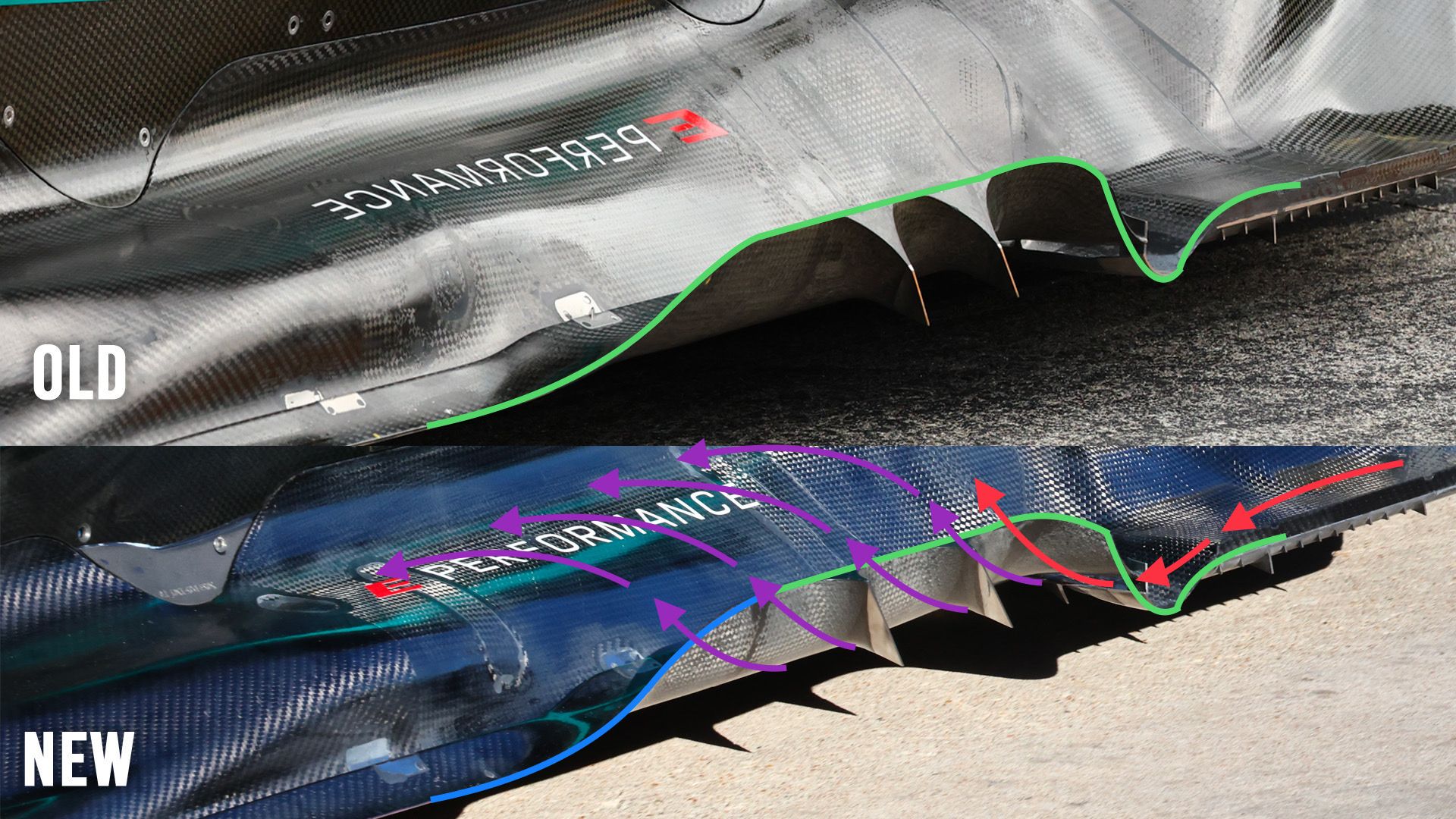
If you can remember back to the start of 2022 when these ground effect regulations first kicked in, Mercedes basically had none of this detail on the outer edge of the floor. It was totally reliant on getting the car to basically run on the ground. The team found out very quickly that that was more or less impossible.
It's still very important to be as low to the ground as possible, but this vortex structure acts more like a dimmer switch than an on off switch, making the car much more predictable for the driver.
Is this development the magic bullet? No, nothing ever is. It’s the sum of all the parts that add up to having a competitive car and I think Mercedes still has some of those parts missing.
We'll have to wait until next year before we see if Mercedes really has got on top of its 2022 and 2023 woes.


